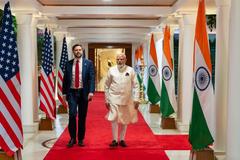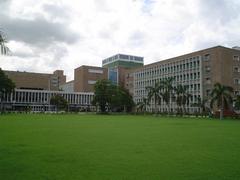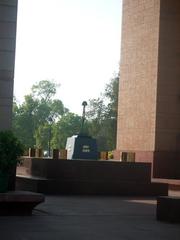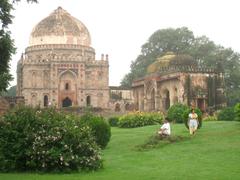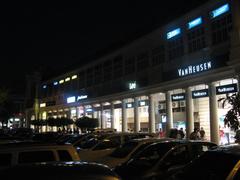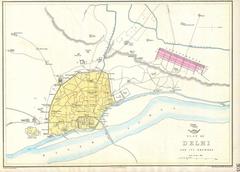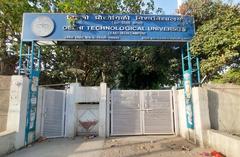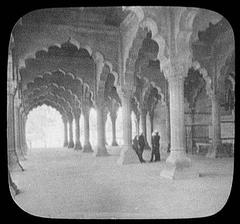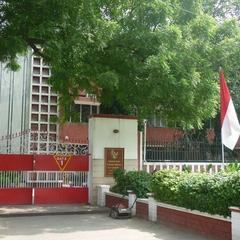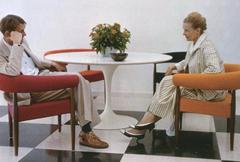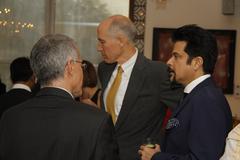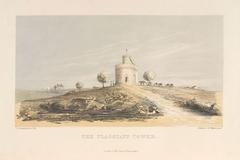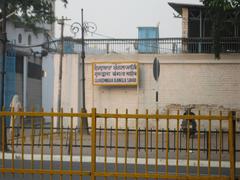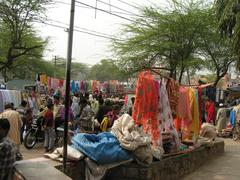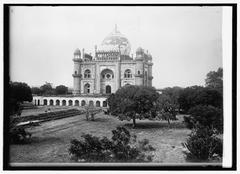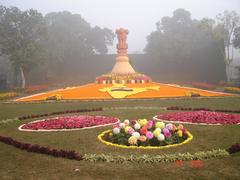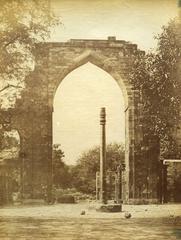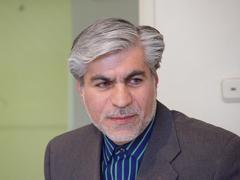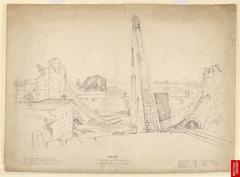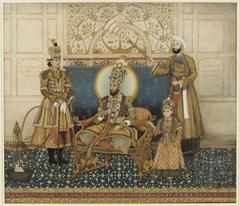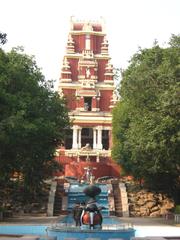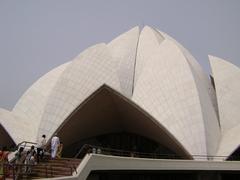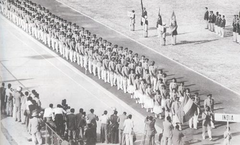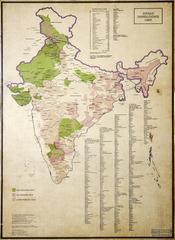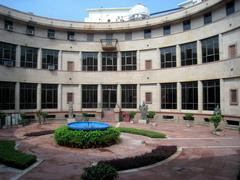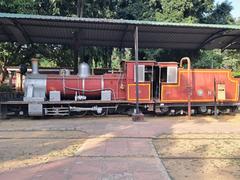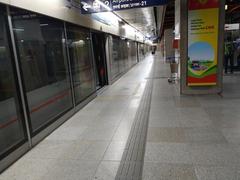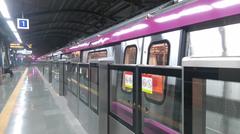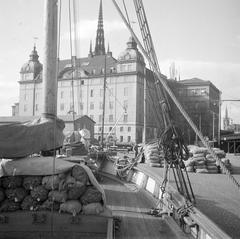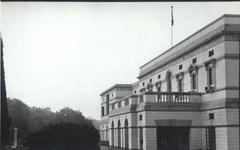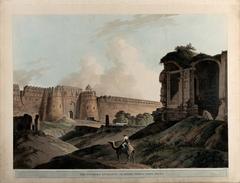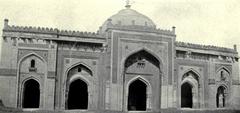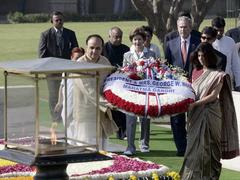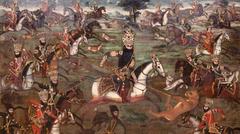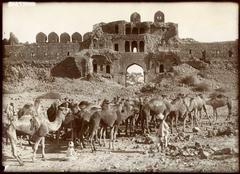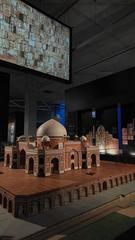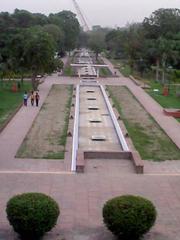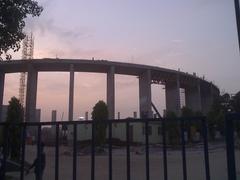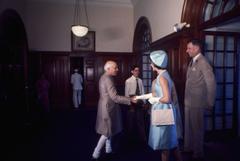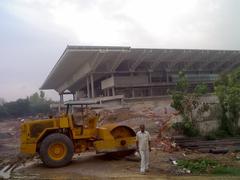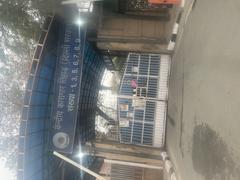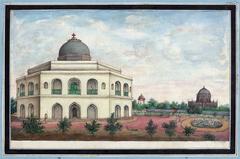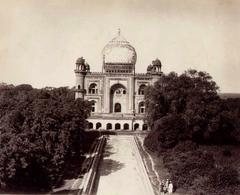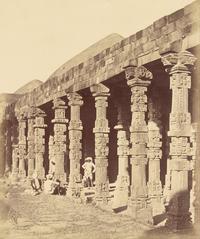
India International Centre, New Delhi: Visiting Hours, Tickets, and Historical Significance
Date: 04/07/2025
Introduction
Nestled beside the historic Lodi Gardens, the India International Centre (IIC) stands as one of New Delhi’s most influential cultural and intellectual landmarks. Since its inception in 1959, the IIC has played a pivotal role in nurturing international dialogue, fostering artistic expression, and promoting a spirit of amity among diverse communities. Designed by Joseph Allen Stein, the Centre’s architecture elegantly fuses modernist sensibilities with indigenous Indian traditions, harmonizing with the capital’s historic fabric.
This comprehensive guide offers an in-depth look at the IIC’s storied history, architectural brilliance, visitor information, accessibility features, and practical tips. Whether you are a student of architecture, an art aficionado, or a traveler keen to explore Delhi’s cultural heritage, this article will help you make the most of your visit to the India International Centre (IIC History; IIC Brochure; iicdelhi.in; Wikipedia).
Contents
- Origins and Founding Vision
- Institutional Establishment and Early Years
- Architectural Significance
- Expansion, Programmes, and Events
- Visiting Information: Hours, Tickets, and Accessibility
- Facilities and Visitor Experience
- Nearby Attractions
- Tips for Visitors
- Frequently Asked Questions (FAQs)
- Conclusion
- References
Origins and Founding Vision
The idea for the India International Centre emerged in 1958 during a conversation between Dr. Sarvepalli Radhakrishnan (then Vice President of India) and philanthropist John D. Rockefeller III. Inspired by similar institutions abroad, Rockefeller envisioned a space in India that would deepen “true and thoughtful understanding between peoples of nations” (IIC History; IIC Brochure). With support from the Rockefeller Foundation and Prime Minister Jawaharlal Nehru, a 4.76-acre site near the Lodi Gardens was selected for the Centre’s construction.
Institutional Establishment and Early Years
The IIC was formally registered on March 9, 1959, under the Societies Registration Act. Eminent figures such as Professor N.K. Sidhanta and Dr. B.P. Pal were part of its first management committee. The foundation stone was laid by Prince Akihito of Japan on November 30, 1960, symbolizing international friendship. The main complex was inaugurated by Dr. Radhakrishnan in January 1962, with John D. Rockefeller III in attendance (Wikipedia).
Architectural Significance
Designed by Joseph Allen Stein, the IIC exemplifies post-independence Indian architecture that respects both modernist principles and local traditions. The complex features:
- Three Wings: North (residential), West (dining/social), South (library, auditorium, administration).
- Natural Materials: Use of local quartzite stone and blue Kota floors.
- Jali Screens: Blue-tiled ceramic latticework inspired by Islamic architecture, offering filtered light and privacy.
- Courtyards and Gardens: Blending built and natural environments for tranquility and openness.
- Environmental Responsiveness: Thick stone walls, shaded porticoes, and garden layouts mitigate Delhi’s climate (iicdelhi.in; architexturez.net).
The IIC’s design has been widely lauded for its integration with the surrounding cityscape and its enduring aesthetic appeal.
Expansion, Programmes, and Events
Over the years, the IIC has expanded to meet growing demand:
- Annexe (1996) and Kamaladevi Complex (2011): Offer additional spaces for conferences, exhibitions, and events.
- Annual and Thematic Festivals: The “IIC Experience: A Festival of the Arts” is a major highlight, featuring dance, music, theatre, and visual arts (IIC Programmes).
- Lectures, Symposia, and Panel Discussions: Regularly convenes thought leaders from India and abroad.
- Art Exhibitions, Film Screenings, and Literary Events: Foster a vibrant cultural atmosphere.
The IIC maintains a non-official, non-aligned stance, cultivating a diverse membership drawn from the arts, academia, government, and diplomacy.
Visiting Information: Hours, Tickets, and Accessibility
Visiting Hours
- General Hours: Monday to Saturday, 9:00 AM – 7:00 PM
- Closed: Sundays and public holidays
- Event Timings: May vary; check the official website for up-to-date schedules.
Tickets and Entry
- Public Areas: Entry to galleries, exhibitions, and many events is free.
- Special Events/Performances: Some may require tickets; confirm details on the IIC website or by contacting the Centre.
- Registration: Advance registration is recommended for select lectures, seminars, and tours.
Accessibility
- Wheelchair Access: The complex is fully accessible, with ramps and wide corridors.
- Assistance: Available upon request; contact the Centre in advance for specific needs.
Location & How to Get There
- Address: 40, Max Mueller Marg, Lodhi Estate, New Delhi, 110003
- Metro: Jor Bagh Station (Yellow Line), ~1.5 km away
- Bus/Taxi: Well-connected by city buses and widely available taxis or auto-rickshaws
- Parking: Limited on-site; public transport is recommended
Facilities and Visitor Experience
Main Complex Facilities
- C. D. Deshmukh Auditorium: Premier venue for lectures and performances
- Conference Rooms: For seminars and workshops
- Library: Expansive collection supporting research
- Guest Accommodation: 48 single, 28 double rooms, and two flats, mostly opening onto lawns or the Lily Pond
- Dining Halls and Lounges: Indian and international cuisine; terrace views of Lodi Gardens
- Art Galleries: Rotating exhibitions of contemporary and traditional art (Explore IIC Facilities)
Annexe and Kamaladevi Complex
- Multipurpose and Seminar Rooms: Flexible spaces for events
- Additional Art Gallery: For exhibitions
- Extra Accommodation: 16 double rooms in the Annexe
Outdoor Venues
- Landscaped Lawns and Gardens: Fountain Lawn, Rose Garden, Annexe Court, and Terrace are popular for outdoor events (IIC Facilities)
Dining
- Dining Hall and Terrace Pergola: Known for fresh, seasonal menus and serene garden views (Dining at IIC)
Nearby Attractions
- Lodi Gardens: Adjacent historic park with tombs and greenery, ideal for a stroll or photography
- National Gallery of Modern Art: Features Indian modern art and rotating exhibitions
- Humayun’s Tomb: UNESCO World Heritage site nearby
- Khan Market: Upscale shopping and dining destination
Tips for Visitors
- Best Time to Visit: October–March for pleasant weather; avoid peak summer and monitor air quality in winter (Delhi Climate Guide)
- Dress Code: Modest attire recommended; Delhi is conservative (Delhi Cultural Etiquette)
- Security: Standard checks at entrance; carry photo ID (Travel Tips for Delhi)
- Photography: Generally allowed in public areas and gardens; check for restrictions during exhibitions or events
- Event Booking: Some events may require advance registration or tickets (IIC events calendar)
Frequently Asked Questions (FAQs)
Q: What are the IIC’s visiting hours?
A: Monday to Saturday, 9:00 AM – 7:00 PM; closed Sundays and public holidays.
Q: Is there an entry fee?
A: Most exhibitions and lectures are free; some events may require a nominal fee or prior registration.
Q: How can I reach the IIC by public transport?
A: Jor Bagh Metro (Yellow Line) is about 1.5 km away. Buses, taxis, and auto-rickshaws are also convenient.
Q: Is the IIC accessible for differently-abled visitors?
A: Yes, the Centre provides wheelchair access and other facilities.
Q: Can non-members attend events?
A: Many cultural events and exhibitions are open to the public; some require tickets or registration.
Q: Does the IIC provide accommodation for tourists?
A: Accommodation is primarily for members and their guests, or for conference attendees.
Conclusion
The India International Centre is more than an architectural icon—it is a vibrant institution fostering cultural dialogue, intellectual exchange, and artistic excellence. Its thoughtful design, robust calendar of events, and tranquil setting amidst Delhi’s historic quarter make it a must-visit for anyone seeking to engage with the city’s cultural pulse. For the latest updates on events, visiting hours, and ticketing, always refer to the official IIC website or use mobile apps like Audiala to enhance your experience.
References
- IIC History
- IIC Brochure
- India International Centre – Wikipedia
- India International Centre Official Website
- IIC Programmes
- IIC Facilities
- IIC Building and Environment
- Architexturez.net – IIC Architecture Analysis
- Samhita IIC
- Delhi Tourism Guide
- Travel Tips for Delhi
- IIC Art Gallery Information
Images: Include high-quality photographs of the IIC’s exterior, interior event spaces, and adjacent Lodi Gardens with descriptive alt text such as “India International Centre building New Delhi” and “IIC auditorium with cultural event.” For an interactive map, visit the official website.

